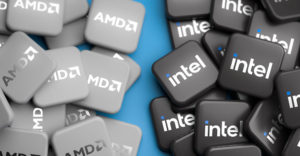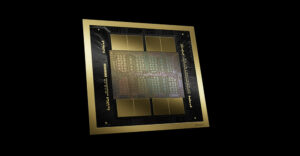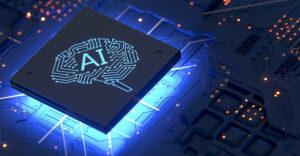As a lifelong New York Giants fan, it’s been hard to suffer through the 2024 season, culminating last weekend in the Giants’ most recent debacle, losing to the below-average New Orleans Saints on a botched field goal in the last seconds of the game.
In my disgust in the aftermath of the game, it occurred to me: Is present-day Intel the equivalent of the 2024 Giants? It sounds like a ridiculous question, but the similarities are eerie.
Let’s face it: The two titans of their industries — the New York Giants in professional football and Intel in technology — have struggled through severe scrutiny and poor performance the past few years. Both were once at the top of their fields, making headlines and defining periods, so it’s easy to draw analogies between them.
For the Giants, simply beyond the sheer shoddiness of the on-field performance over the past few years (the team hasn’t been to the Super Bowl since 2012), management made one of the most idiotic decisions of all time before the season began by extending a questionable long-term contract to “franchise” quarterback Daniel Jones and allowing Saquon Barkley to sign with its divisional rival, the Philadelphia Eagles. Now, Barkley is having one of the greatest seasons of all time for a running back.
As for Intel, the company has struggled to maintain market share in the PC space over the past few years, conceded the smartphone space after it passed over Apple’s request for a suitable silicon solution for its iPhone in 2007 (which would have ecosystem ramifications that Apple has taken advantage of), not to mention missing the overall industry movement to Arm-based architectures for mobile devices and even laptops.
Both organizations are currently under fire for their (at least perceived) inability to give fans and customers a modicum of faith that turnarounds were in the making. Although there are similarities between their difficulties, a deeper examination shows that Intel’s problems are essentially distinct from the New York Giants’ of 2024 and are being addressed in a way that distinguishes the company from them.
Giant Issues
The New York Giants, a legendary NFL team that has won four Super Bowls, was under tremendous pressure going into the 2024 campaign.
Recent years have been characterized by inconsistent play, dubious coaching choices, and poor player development. In today’s NFL, the team has had difficulty adjusting when creative play-calling and analytics-driven tactics are paramount.
The Giants have mostly failed to take advantage of their chances despite brief flashes of potential, which has created discouraged supporters and experts doubtful of their prospects, as well as exasperating season ticket holders like me.
Difficulties Facing Intel
Intel used to be the undisputed leader in its industry. The company literally controlled the semiconductor market for many years, establishing the chip innovation and performance benchmark. But a slew of upheavals in the 2020s put its hegemony in jeopardy. The emergence of rivals like AMD and Nvidia and the advanced manufacturing technology pioneered by Taiwan Semiconductor have compelled Intel to confront its weaknesses.
The leading cause of Intel’s problems is the company’s delay in switching to sophisticated manufacturing nodes. Due to setbacks with its 10nm and 7nm nodes, Intel lost market share in essential categories, while Taiwan Semiconductor and Samsung advanced with their state-of-the-art 5nm and 3nm processes. These challenges were exacerbated by the increasing use of Arm-based architectures, especially in AI and mobile applications, where Intel’s x86 architecture has struggled to stay competitive.
Although the Giants and Intel face formidable obstacles, their responses distinguish them. The Giants have frequently seemed hapless, switching quarterbacks and coaches in an attempt to find a short-term solution. Due to their inability to develop a clear plan of action, fans and experts are beginning to doubt the franchise’s long-term survival.
In contrast, Intel has attempted to take serious action to overcome its obstacles. Under the direction of CEO Pat Gelsinger, the company launched a daring plan to regain its place at the forefront of the semiconductor industry.
The core of this endeavor is Intel’s IDM 2.0 strategy, which aims to increase its role as a foundry for third-party clients while modernizing its manufacturing capabilities. By doing this, Intel hopes to take on Taiwan Semiconductor and Samsung head-to-head as a manufacturing giant and chip designer.
Additionally, Intel has increased its focus on cutting-edge technologies. Its attempts to create specialized chips for data centers and its investments in AI-specific hardware, such as the Gaudi AI accelerators, demonstrate a proactive approach to the upcoming wave of computing innovation. In fairness to Intel, these actions have revealed a business willing to own up to its mistakes while working to influence the future rather than merely responding to it.
Changes in Culture and Leadership
An organization’s ability to overcome hardships is largely dependent on its leadership. With numerous coaching staff changes and a front office that frequently appears out of step with the team’s demands, the Giants have had difficulty establishing a permanent leadership structure. This unpredictability has led to a lack of direction and identity on the field. Watch any of the Giants’ losses over the past few seasons, and it’s hard to dispute this.
In contrast, Intel enjoyed reasonable unity and support when Pat Gelsinger rejoined the company. Gelsinger prioritized a return to Intel’s engineering foundation while cultivating an innovative and accountable culture. Ambitious aims and a willingness to take chances characterized his tenure, which contrasts sharply with the Giants’ more cautious strategy.
Legacy Is a Double-Edged Sword
The Giants and Intel are both burdened by their histories. The Giants’ rich past makes them feel both proud and burdened, which makes their recent setbacks even more disappointing. Because of the team’s illustrious background, supporters find it challenging to make sense of its current hardships in light of its former success.
Being a pioneer in its industry comes with expectations, which Intel also struggles with. The impact of the company’s errors is exacerbated by its standing as a technology innovator. However, Intel’s heritage offers distinct advantages, including a wealth of technical know-how, solid industry ties, and a still enviable reputation, especially with legacy PC OEMs like HP, Dell, and Lenovo. These resources have put Intel in a position to build on its prior achievements and focus on future expansion.
Extended Future for Intel
The timelines of their various sectors represent one of the most considerable distinctions between Intel and the Giants. NFL teams follow an annual cycle, and their fortunes frequently fluctuate depending on how one season turns out. Failures are front-page news, and because of their immediacy, it has become challenging for the Giants to bounce back from in the near future.
Timelines are lengthier in the tech sector, though. Years pass during semiconductor development cycles, and strategic choices cannot have their full effects for ten years.
Intel has more time to accomplish its ambitions and bounce back from setbacks because of this longer horizon. While Intel’s problems have been more gradual and (in theory) allow for course correction and progressive development, Wall Street is typically not patient, and investors get nervous when they don’t sense positive signs of leading indicators like market share gains and revenue increases.
Intel’s Path Ahead
Despite its struggles, Intel is not a business that is content to let things go. Intel is setting itself up for a long-term resurgence with its IDM 2.0 strategy, AI initiatives, and redoubled emphasis on silicon excellence.
Some now contend that Intel will never regain its position as the semiconductor industry leader, and its issues are so complicated that they might not be resolved. Due to the company’s manufacturing delays, AMD and Nvidia have increased market share, further widening the gap as Intel prepares for the 18A production phase.
Furthermore, Intel’s foundry sector has had trouble attracting customers, which has made its recovery attempts more difficult. Pat Gelsinger’s resignation highlights the need for strong leadership and creative ideas after his tenure saw a significant drop in stock value. Restoring investor trust and industry stature will need strategic restructuring and a fresh emphasis on execution, which will be highly challenging due to internal resistance to whoever takes over as Intel’s leader.
It’s easy to forget that many analysts welcomed Gelsinger’s return to Intel in 2021 with hope because they thought his familiarity with the firm, his grasp of the silicon industry, his focus on customers, and his visionary attributes were precisely what was required to turn the giant around.
However, under his direction, Intel had endeavored to overcome several obstacles, such as a lag in manufacturing improvements and heightened competition from rivals like AMD and Nvidia. Due to these problems, Intel’s stock value significantly dropped, wiping out almost $150 billion in market capitalization.
Although some have claimed that Gelsinger just needed more time to carry out his plan effectively, the company’s board thought differently and finally decided that a drastic change in direction, starting with a change in CEO, was required.
Despite being interesting and even amusing, the connection between Intel and the 2024 New York Giants ultimately falls short considering all that.
Even if both organizations are going through difficult times, Intel’s approach shows a degree of strategic vision and flexibility that the Giants have not yet shown. Intel is building the foundation for a future that solidifies its position as a leader in the technology industry, not just battling to remain relevant. If Intel is a behemoth, it is undergoing reinvention rather than decline, which it must do if the company is to grow.
There are reasons to be optimistic for Intel. Its Lunar Lake family of processors is showing favorable performance and battery life comparisons to Apple Silicon and even offerings from Qualcomm, which has made a great deal of favorable news with its Snapdragon Elite solutions for laptops.
High Stakes for Intel’s Next CEO
Intel’s incoming CEO, whoever that might be, will have one of the greatest corporate turnaround challenges in tech history. The company will have to dramatically cut headcount, which makes Intel’s cut of 15,000 people earlier in the year look like a pinprick.
Intel seems committed to its foundry strategy, which will require years of investment before it yields significant returns. In a post-Biden Administration world, the company may be unable to rely on the federal government for further investment in its foundry business. To top all of that, some customers may not be comfortable with Intel’s “church and state” strategy of manufacturing non-Intel chips in Intel factories.
Intel’s chances for success will largely depend on its new leader. I advise hiring someone from the outside who is not an Intel insider who might be influenced by legacy Intel personnel who have developed a survival mentality and are reluctant to take risks. Intel’s new CEO will likely be the most-watched tech hire of 2025, as their leadership will provide critical insights into the company’s future.
The new CEO will also have to deal with a management team who have remained the many cuts the company has gone through and might be unwilling to make the necessary changes Intel must undertake, as legacy management will be in “survivor” mode and unlikely to take risks.
As for the Giants, I’m horrified to state that I’m not optimistic. For the first time in my 46 years as a season ticket holder (shelling out over $200,000 during that period), I’m contemplating giving them up. Or maybe I’ll just play Madden 2025 on my Xbox One for the remainder of the season and not waste my team watching Big Blue suffer.
Fortunately for Intel, it is not at that point. The company controls its destiny, but time is not on its side, so its incoming CEO must show results quickly and tangibly.

























































